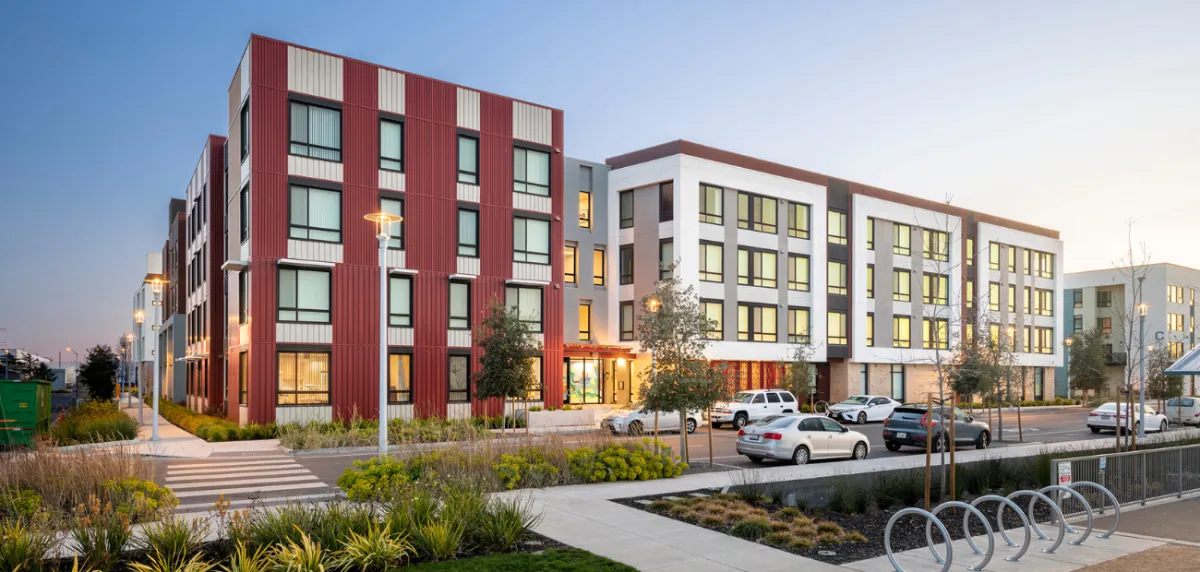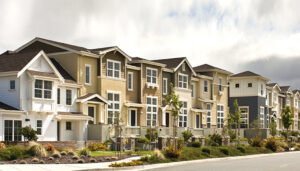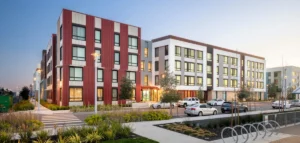More than a quarter of the apartment loans financed by the GSEs in 2017 qualified for the green incentive programs – May 3, 2018.
Apartment investors have been taking advantage of low interest loans through the “green financing” programs offered by Fannie Mae and Freddie Mac. “About 40 percent of our Fannie Mae and Freddie Mac business is green,” says Kyle Draeger senior managing director in the multifamily division of real estate services firm CBRE.
The loans have proven to be extremely useful to value-add investors, who typically renovate properties to improve the income produced by the apartments. So many borrowers qualified for the green incentives in 2017 that federal regulators have raised the requirements for new loans in 2018, and so far this year the green lending business still seems to be going strong.
The “green” programs often slice roughly a third of a percentage point off interest rates offered by the government-sponsored entities (GSEs).
Even some apartment building owners who have been skeptical about the value of green investments for a decade are applying for the loans. “The focus by the GSEs has certainly created more interest from people,” says Dave Borsos, vice president, capital markets, for the National Multifamily Housing Council (NMHC), an industry advocacy group.
FHFA raises the bar to get the lower interest rate
Fannie Mae and Freddie Mac’s green incentive programs have been almost too popular. More than a quarter of the apartment loans financed by the GSEs in 2017 qualified.
“There was some level of concern from the regulator that there were too many loans that were qualifying,” says Borsos.
Freddie Mac financed $18.7 billion in loans for energy or water improvements in 2017. That’s up from just $3.3 billion in 2016. Freddie Mac’s green lending in 2017 was also more than a quarter (26 percent) of its $73 billion in overall multifamily financing activity. Fannie Mae financed $27.6 billion in green loans, nearly a third of the agency’s total $67 billion in multifamily financing activity last year.
Renovations that save energy and water have become much less expensive over the last few years and that has made these improvements much more attractive as investments, says Borsos.
The Federal Housing Finance Agency (FHFA), which oversees Fannie Mae and Freddie Mac, set a new, higher standard for 2018. To get the discount, properties now must have a credible plan to reduce to use of energy or water at the property by at least 25 percent. In 2017, borrowers had to meet a lower standard set by either Fannie Mae (20 percent improvement) or Freddie Mac (15 percent improvement).
Even with the new, higher standards, borrowers still do not have to bring their properties into compliance with a green building standard, such as the Leadership in Energy and Environmental Design (LEED) set by the U.S. Green Building Council. In the past, old buildings have had difficulty meeting these standards without an undergoing a gut renovation. In contrast, a 25 percent improvement in energy or water is attainable for an older building, but still has enough impact to be meaningful.
So far in 2018, borrowers are still eagerly signing up for these loans. “Freddie Mac and Fannie Mae are still seeing good production, even with the higher hurdle rates,” says Borsos.
Energy and water improvements incentivized by Fannie Mae and Freddie Mac financing provide one clear route to improve the income from an apartment property.
That’s a big benefit for value-added investors, who buy buildings and renovate them to improve the operating income produced by property, typically with a plan to sell within a few years. These properties have grown increasingly difficult to find since have already gone through a round of renovation in this cycle.
Green financing programs help make these value-added deals work. “I don’t think that the value-added investment trend is going to peter out—there is still a lot of interest in that from investors,” says Borsos.
The terms of the program
In practice, the interest rate discount on these loans typically works out to 30 to 35 basis points less than the interest rates offered by Fannie Mae and Freddie Mac to comparable properties, according to CBRE. Fannie Mae and Freddie Mac offer the discount on all of their loans to qualifying properties, from short-term rehab loans to permanent financing. “Every loan term is available,” says CBRE’s Draeger.
The agencies can afford to offer such large discounts because the loans don’t count towards the limits of $36 billion apiece on the volume of loans that Fannie Mae and Freddie Mac can make on apartment properties each year.
Source: NREI











